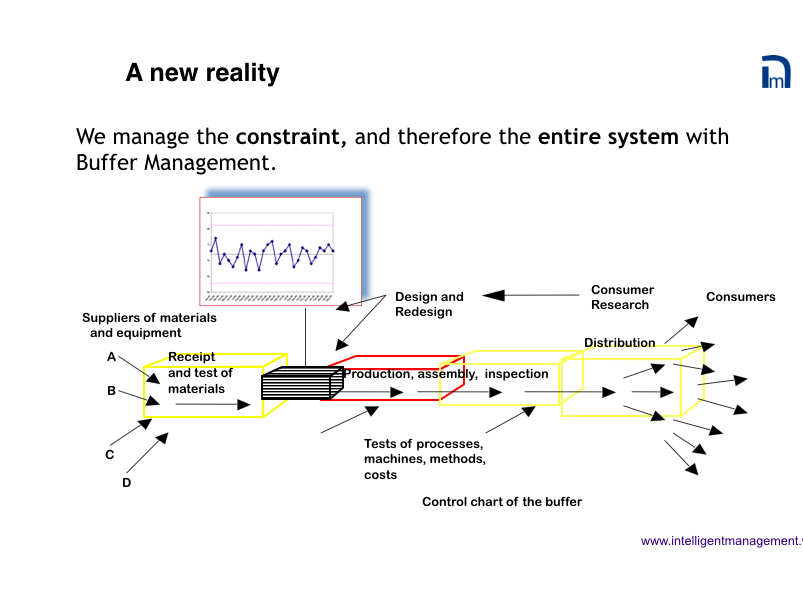Why are people still stuck in adopting a traditional hierarchy and functional organization structure when there are clearly so many drawbacks? When organizations are created and organized in a matrix of vertical hierarchy and functions, an inevitable consequence is the existence of a series of “walls” or divisions that inhibit the resources involved in producing an optimal result toward the overall goal. Communication gets slowed down or completely blocked, innovation struggles to emerge through the ranks and bureaucracy, projects are delayed and go over budget, quality suffers, and reaction time to changing market demands is too slow.
Individuals suffer because they do not have the authority to carry out the tasks for which they are responsible. Careers are limited because people work for a boss who has to improve their own performance in a vertical way. This means that competencies, both technical and managerial, do not find a natural way to develop. This creates frustration due to artificial “ceilings.”
Even more dramatically, ‘silo sickness’ means that the larger implications of cause and effect relationships that exist in organizations are totally disguised. It takes time for the effects of a cause to propagate through a system. People have no means of understanding the implications of their local, siloed decisions on the big picture. Even the heads of functions are blind-sided to them.
A mechanistic worldview
The hierarchical/functional organization reflects a mechanistic, Newtonian worldview, where separation is feasible and dynamics are linear. This attitude lacks awareness and understanding of our new reality that is dominated by increasing complexity, meaning unprecedented levels of interdependencies.
To move forward, we have to question the assumptions, i.e. mental models that account for the persistence of traditional hierarchies in spite of their shortcomings. Over the years of our on-the-field research and development, at Intelligent Management we have come to summarize the major assumptions of the conflict adopt a hierarchical structure vs. not adopt a hierarchical structure as:
- A hierarchy can only be vertical;
- Control has to be exercised equally over all components of the organization;
- The global optimum is equal to the sum of the local optima.
To challenge these assumptions operationally we need a plan of action that can transform an organization into a whole system. Our work at Intelligent Management began with the systemic vision of Deming and statistically controlled processes (Theory of Profound Knowledge) and grew to embrace the concept of managing a constraint (Theory of Constraints). By working on a synergy of these approaches known as the Decalogue methodology, we came to see that in order to bring together cohesively the idea of constraint with the idea of a statistically controlled system we have to orchestrate statistically controlled processes and subordinate them to a well-defined (and very statistically stable) part of our system, the constraint. If these stable, i.e. reliable, well orchestrated, processes all have the capacity to subordinate to the chosen constraint, then all we need in order to protect the whole system is a “buffer” in front of the constraint; needless to say, the oscillation of the buffer must be controlled statistically. We created a concept for a systemic organization that we refer to as the ‘choked tube’.
From silos to System
From a philosophical as well as scientific viewpoint, the Decalogue attempts to shift management from the obsolete, Newtonian worldview in which the results of the whole organization equal the sum of its individual, separate and hierarchical parts, towards a systemic and interdependent network. The shift is achieved by combining the allegedly “reductionist” approach of the Theory of Constraints with a purely systemic view based on interdependencies and interactions. It does so in practical terms by:
- building interdependent processes managed through the control of variation
- subordinating these interdependencies to a strategically chosen element of the system called constraint
- designing the organization as a network of interdependent projects with a goal
This work has developed into an organizational design for our age of complexity. We call it the Network of Projects.
Sign up to our blog here and shift your thinking towards broader, systemic possibilities for yourself and your organization.
About the Author
Angela Montgomery Ph.D. is Partner and Co-founder of Intelligent Management and author of the business novel+ website The Human Constraint . This downloadable novel uses narrative to look at how the Deming approach and the Theory of Constraints can create the organization of the future, based on collaboration, network and social innovation. She is co-author with Dr. Domenico Lepore, founder, and Dr. Giovanni Siepe of ‘Quality, Involvement, Flow: The Systemic Organization’ from CRC Press, New York.







Leave a Reply